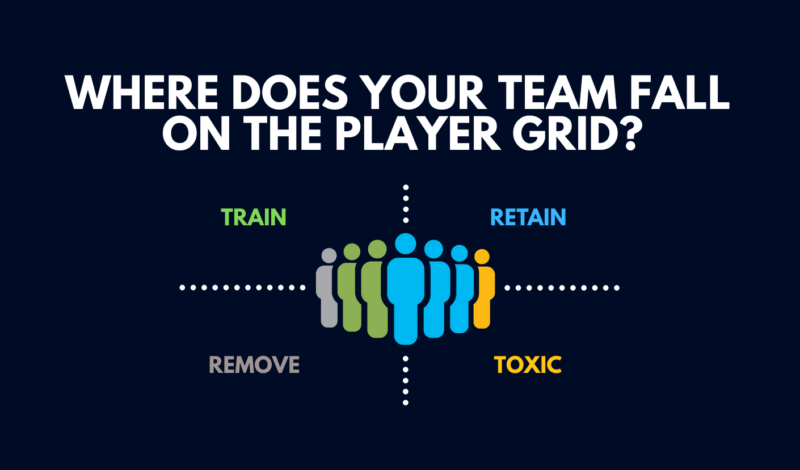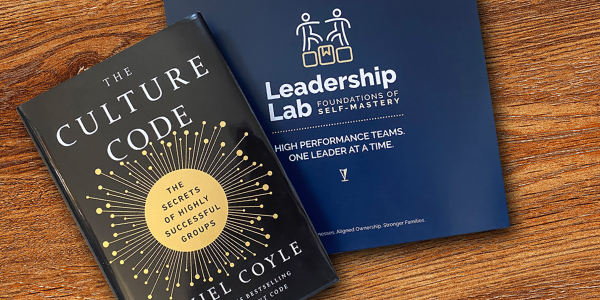LEADERSHIP
Are you tolerating toxic productivity?

Toxic productivity. Is this a new term to you? Or did the phrase make you cringe because you KNOW it exists in your organization?
While it sounds like an oxymoron, it is more prevalent than most business leaders care to admit.
Toxic productivity comes from employees who are a constant source of drama. They create tension within their respective team and – depending on the size of the company – can even cast a negative net over the entire culture. Plus if it’s a family member, the impact can be felt at home, family functions and holidays.
So why do we hang on to them?
Toxic Players actually do their job well. They are productive. They have tribal knowledge. They have long standing relationships with customers and vendors. Unfortunately, just like a Super Fund site, the legacy of this kind of disruptive employee can be costly and create a toxic environment for years to come. The biggest risk is that your A-players see you tolerating the toxicity and they decide to leave rather than deal with the drama.
The Player Grid connects core values to productivity.
When you remove the emotion from evaluating where your team falls on this grid, there is no blame, no shame. It’s actually really simple:
Either they align with the company’s core values or they don’t.
Either they are productive in their roles or they are not.
Now that you are thinking in terms of these 4 types of team players, ask yourself these questions:
A-Players = Retain: are you creating an environment to attract & keep A-Players?
B-Players = Train: how are you helping B-players grow into A-Players?
C-Players = Remove: do you quickly recognize & remove the bad hires?
B/C Players = Toxic: can you coach them up or do they need to go?
It feels “acceptable” to overlook the lack of value alignment when an employee is meeting goals or able to check off all of the task boxes.
Try the Player Grid. Click here and I’ll email it to you.
So my challenge to you is this… Look at those A-Players. Calculate not only the monetary value they deliver to the bottom line but also the intrinsic value they bring to the company culture. Assign a number, a value. Then ADD in the time, money & resources it would cost to replace those A-Players. Ouch.
You will quickly see that the toxic productivity may be adding short-term profit, but the long-term impact will cost you in the way of your best people.
Right people. Right seats. Aligned to values AND productive. This is how you build agile growth.
+++++++++++++++++++++++++++
Cheryl Doll is a Senior Business Advisor / Gravitas Coach at Compass Point Consulting and provides hands-on consulting & coaching to help family businesses close performance gaps; give owners practical, actionable tools that drive growth; deliver training to develop leaders and position the business for successful ownership transition – all on their terms.
Learn more at: https://www.compasspt.com
You may also like…

BLOG | CUSTOMER
How Family Businesses Can Navigate Post-COVID Challenges
“In quiet and untroubled times, it seems to every administrator that it is only by his efforts that the whole population under his rule is kept going..."
Read More
BLOG | FAMILY DYNAMICS / GOVERNANCE
Becoming a Family Business: This Firm Lives What They Teach
You may know the man in the photo as Tom Garrity, Founder of Compass Point, a family business consulting firm in Southeastern PA, headquartered in the Lehigh Valley; I know him as my inspiration, mentor, confidante, tennis partner, and best of all – my dad. This blog marks...
Read More
BLOG | LEADERSHIP
Cracking The Culture Code for Business and Leadership Strategy
Discover how business and leadership intersect in Daniel Coyle's "The Culture Code," offering insights into building successful organizations. I recently asked the LinkedIn community what book most closely aligns with your leadership identity...
Read MoreWhere Family Businesses Come to Grow & Learn
At Compass Point, we make it easy to get insights, training, tools, and articles straight to your inbox and help family business owners and their team continue to grow, learn, and lead.


